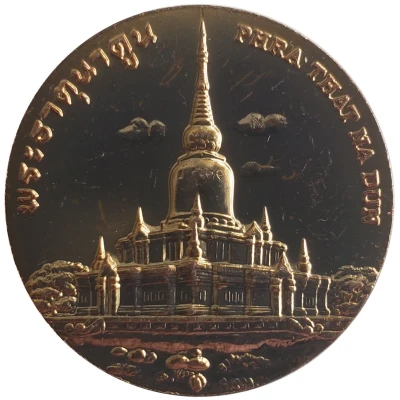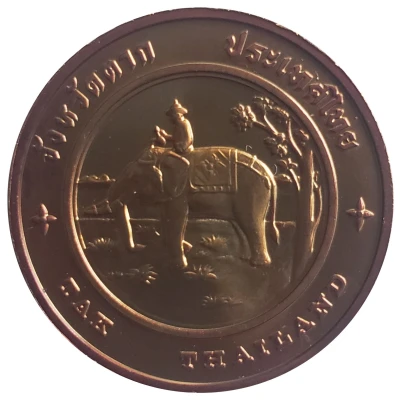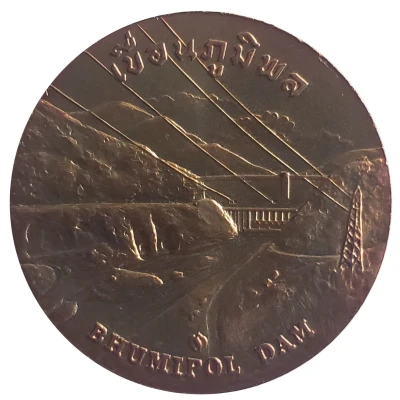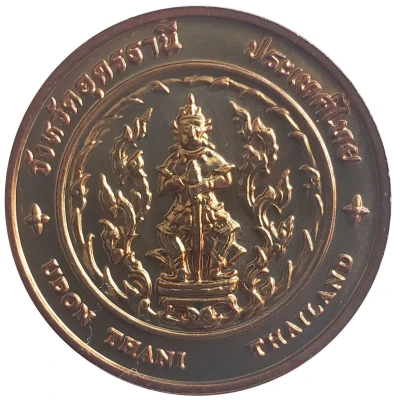
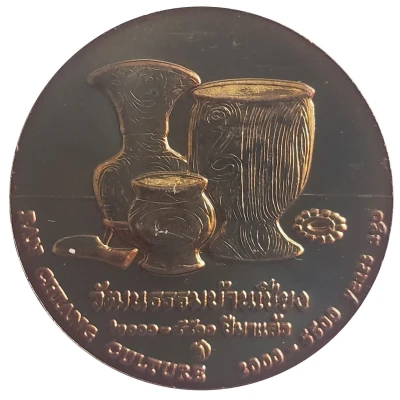

© Micheal Linke
Medal - Udon Thani Province ND
| Copper | 8.5 g | 25 mm |
| Location | Thailand |
|---|---|
| Type | Medals › Souvenir medallions |
| Composition | Copper |
| Weight | 8.5 g |
| Diameter | 25 mm |
| Shape | Round |
| Technique | Milled |
| Orientation | Medal alignment ↑↑ |
| Updated | 2024-11-13 |
| Numista | N#336975 |
|---|---|
| Rarity index | 97% |
Reverse
Cultural heritage items from the Ban Chiang Archaeological site.
Lettering: BAN CHIANG CULTURE 2000-5500 YEARS AGO
Edge
Plain
Comment
Obverse:The name Udon Thani translates as the 'northern city' and as its symbol has God Wetsuwan the celestial guardian of the Northern Heavenly Gate.
Reverse:
The Ban Chiang Archaeological Site is a large, prehistoric earthen mound located in an agricultural area in the Ban Chiang Sub-district, Nong Han District of Udon Thani Province in northeast Thailand, within the watershed of the Mekong River. It is an oval-shaped mound formed by human habitation 500 meters x 1,350 meters and 8 meters high. The site was first discovered in 1966. It has since been extensively excavated and its remains studied by Thai and international scholars. Since 1966 the dating of the site has been adjusted and refined over time in line with advances in the understanding and techniques of radiometric dating. This research has revealed that the site dates from 1,495 BC .and contains early evidence for settled agrarian occupation in Southeast Asia, along with evidence of wet rice agriculture, associated technological complex of domesticated farm animals, ceramic manufacture, and bronze tool-making technology. The total area of the property is 67.36 ha of which approximately 0.09% has been excavated (as of 2012)
The Ban Chiang Archaeological Site is a prehistoric human habitation and burial site. It is considered by scholars to be the most important prehistoric settlement so far discovered in Southeast Asia, marking the beginning and showing the development of the wet-rice culture typical of the region. The site has been dated by scientific chronometric means (C-14 and thermo luminescence) which have established that the site was continuously occupied from 1495BC until c. 900BC., making it the earliest scientifically-dated prehistoric farming and habitation site in Southeast Asia known at the time of inscription onto the World Heritage List.
"Ban Chiang Archaeological Site - UNESCO World Heritage Centre" https://whc.unesco.org/en/list/575/

